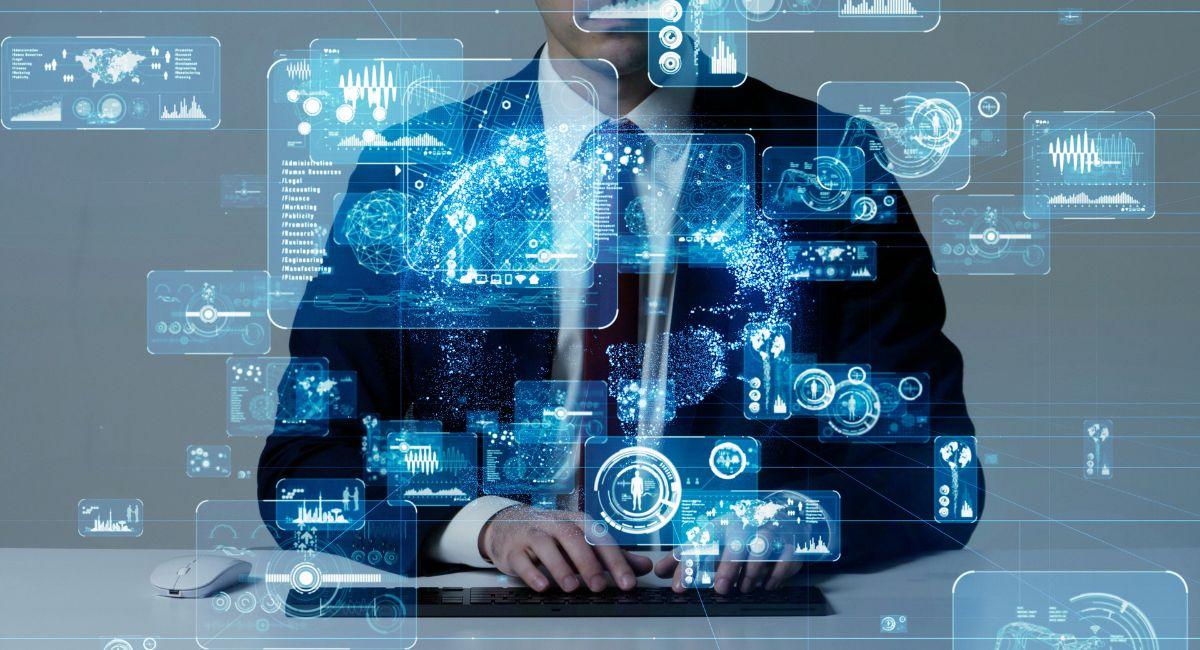Amazing Integration of AI and Blockchain to Uplift Web3 Technology In 2024
The rapid evolution of technology in recent years has paved the way for a new internet era: Web3. Defined by decentralization, transparency, and user control, Web3 represents the next stage of the internet, where blockchain forms the backbone of its infrastructure. But 2024 is seeing an unprecedented development—the integration of artificial intelligence (AI) with blockchain is set to take Web3 to the next level.
AI’s capabilities in data analysis, automation, and intelligent decision-making complement blockchain’s decentralized and secure architecture, creating new possibilities for Web3. This fusion is not only shaping how decentralized applications (dApps) function but also revolutionizing industries by offering smarter, more efficient, and more transparent systems. In this article, we will explore how the integration of AI and blockchain is uplifting Web3 technology, the challenges, and the exciting prospects for 2024.
Understanding Web3: The Next-Gen Internet
Web3, also known as the decentralized web, moves away from centralized control systems of Web2 (dominated by giants like Google, Facebook, and Amazon) and gives power back to users. The key technologies underpinning Web3 include blockchain, decentralized finance (DeFi), non-fungible tokens (NFTs), and decentralized autonomous organizations (DAOs). Unlike Web2, where users often have limited control over their data, Web3 ensures that individuals own and control their digital assets, identities, and interactions.
Blockchain plays a central role in this shift, offering a transparent, immutable, and decentralized ledger for transactions and information. However, while blockchain ensures data security and transparency, the integration of AI can enhance the intelligence and efficiency of decentralized applications running on Web3 platforms.
The Synergy Between AI and Blockchain
AI and blockchain, though distinct technologies, complement each other perfectly. When integrated within the Web3 ecosystem, their combination can solve numerous challenges related to scalability, automation, security, and decision-making.
- AI Enhancing Blockchain Efficiency: AI can improve the speed and efficiency of blockchain operations by optimizing transaction validation processes, automating smart contract execution, and enhancing the scalability of decentralized networks. For example, AI can help manage blockchain data, reducing the time and energy consumed in consensus mechanisms like proof-of-work (PoW) or proof-of-stake (PoS).
- Blockchain Securing AI Models: Blockchain ensures that AI models and data remain transparent, verifiable, and secure. One of the major concerns about AI is the lack of transparency and accountability, often referred to as the “black-box” problem. Blockchain’s immutable record-keeping can make AI models auditable, ensuring that decisions are made ethically and with accountability.
- Decentralized AI: Blockchain also enables the creation of decentralized AI networks, where AI services are distributed across a decentralized infrastructure. In these environments, AI models can be trained collaboratively, allowing multiple parties to contribute data and compute resources without compromising privacy. This decentralization makes AI systems more robust and less susceptible to control by centralized authorities.
Key Applications of AI-Blockchain Integration in Web3
The integration of AI and blockchain in Web3 is unlocking a wide range of use cases across multiple industries. Let’s look at some of the most promising applications in 2024:
1. Smart Contracts and Automation
Smart contracts, self-executing contracts with the terms of the agreement written into code, are central to Web3. However, traditional smart contracts have limited capabilities—they execute predefined actions without the ability to make complex, intelligent decisions. The integration of AI can make smart contracts more dynamic by enabling them to process external data, analyze trends, and even predict outcomes before execution.
For instance, AI could optimize decentralized finance (DeFi) protocols by assessing market conditions and adjusting smart contract terms based on real-time data. This would enable more sophisticated financial instruments, such as dynamic interest rates, that adjust to market volatility without requiring human intervention.
2. AI-Powered Decentralized Autonomous Organizations (DAOs)
DAOs are decentralized entities governed by smart contracts rather than traditional management hierarchies. They operate through collective decision-making and voting systems, ensuring transparency and user participation. However, DAOs often face challenges related to inefficiency, coordination, and decision-making.
AI can enhance the decision-making process in DAOs by analyzing voting trends, assessing the impact of different governance proposals, and predicting the outcomes of decisions. Moreover, AI can automate routine tasks within DAOs, streamlining operations and improving the efficiency of decentralized governance.
3. Data Privacy and Security
Data privacy is a core concern in the Web3 ecosystem, and the integration of AI and blockchain can offer powerful solutions to this problem. With the rise of decentralized networks, data is distributed across multiple nodes, and ensuring its security is paramount. Blockchain ensures that data remains immutable and decentralized, while AI can help monitor and identify potential security threats in real-time.
Furthermore, blockchain’s cryptographic mechanisms can provide secure environments for training AI models on sensitive data. For instance, federated learning, an AI approach where data remains decentralized and models are trained collaboratively, can be combined with blockchain to ensure that AI models are both accurate and privacy-preserving.
4. Decentralized AI Marketplaces
One of the most exciting developments in the AI-crypto space is the emergence of decentralized AI marketplaces. In these marketplaces, AI developers can tokenize and monetize their models, while users can access AI services in a decentralized manner. Platforms like SingularityNET are pioneering this concept, allowing AI services to be bought and sold using blockchain-based cryptocurrencies.
Such marketplaces ensure that AI services are no longer controlled by large corporations but are accessible to anyone, democratizing AI innovation. Blockchain ensures that transactions in these marketplaces are transparent, secure, and tamper-proof, while AI enhances the quality and accuracy of services provided.
5. AI-Enhanced Decentralized Finance (DeFi)
DeFi platforms are revolutionizing finance by eliminating intermediaries and providing financial services such as lending, borrowing, and trading directly to users. AI can take DeFi a step further by enabling predictive analytics, intelligent risk management, and fraud detection.
AI algorithms can analyze vast amounts of data from blockchain networks, detecting patterns and trends that might not be obvious to human users. This can help optimize trading strategies, manage liquidity, and reduce the risk of default in decentralized lending platforms. Moreover, AI can help detect fraudulent transactions in DeFi systems by analyzing blockchain data in real-time, improving the security and trustworthiness of decentralized financial platforms.
Also, read – Top 10 Amazing Ways AI Can Help Both Blockchain And Crypto To Resolve Tech Challenges
Changes Brought by the Integration of AI and Blockchain for Web3
The convergence of artificial intelligence (AI) and blockchain technology is significantly transforming Web3, ushering in a new era of decentralized innovation. As Web3 evolves beyond its foundational concepts of decentralization and user sovereignty, the integration of AI is enhancing its capabilities, addressing its limitations, and expanding its applications. Here’s a closer look at the key changes and advancements resulting from this integration:
1. Enhanced Smart Contracts
Smart contracts are self-executing agreements with the terms directly written into code. Traditionally, they execute pre-defined actions based on predetermined conditions. The integration of AI brings a new level of dynamism to smart contracts, enabling them to handle more complex logic and adapt to changing conditions.
- Dynamic Execution: AI can analyze real-time data and adjust smart contract terms accordingly. For example, a smart contract in a decentralized finance (DeFi) application could automatically adjust interest rates based on market conditions predicted by AI algorithms.
- Predictive Capabilities: AI models can predict future scenarios based on historical data, allowing smart contracts to execute actions based on forecasts. This enhances the ability to manage risk and optimize financial transactions.
2. Improved Decentralized Governance
Decentralized Autonomous Organizations (DAOs) are central to Web3, facilitating decentralized decision-making and governance. However, DAOs often struggle with efficiency and complexity in managing proposals and votes.
- AI-Driven Decision-Making: AI can analyze voting patterns, assess the impact of governance proposals, and provide recommendations based on data-driven insights. This helps DAOs make more informed decisions and streamline governance processes.
- Automated Coordination: AI can manage routine tasks and automate administrative functions within DAOs, improving operational efficiency and reducing the burden on human participants.
3. Optimized Data Management
Data is a critical asset in Web3, and managing it efficiently is essential for decentralized applications (dApps) and services. AI and blockchain integration offers new ways to handle data securely and intelligently.
- Decentralized Data Marketplaces: AI can power decentralized data marketplaces, where users can buy and sell data securely using blockchain. AI algorithms ensure data quality and relevance, while blockchain maintains transparency and security.
- Enhanced Privacy: AI models can be trained on encrypted data without exposing the data itself, thanks to techniques like federated learning. Blockchain’s immutability ensures the integrity of this data, protecting user privacy while enabling advanced AI analysis.
4. Advanced Security Measures
Blockchain is inherently secure due to its decentralized nature and cryptographic principles. However, integrating AI enhances this security further by providing advanced threat detection and prevention capabilities.
- Real-Time Threat Detection: AI can continuously monitor blockchain networks for unusual activities or potential security breaches. Machine learning algorithms can identify patterns indicative of attacks or fraud, allowing for timely responses.
- Automated Security Responses: AI can automate responses to detected threats, such as isolating compromised nodes or halting suspicious transactions. This proactive approach strengthens the overall security of Web3 systems.
5. Decentralized AI Services
The integration of AI with blockchain enables the creation of decentralized AI networks and services, transforming how AI capabilities are accessed and used.
- AI Service Marketplaces: Platforms like SingularityNET facilitate the buying and selling of AI services through blockchain. These decentralized marketplaces provide access to a wide range of AI tools and models while ensuring fair compensation for developers.
- Collaborative AI Development: Decentralized networks allow for collaborative development of AI models, where multiple parties contribute data and computational resources. Blockchain ensures transparency and fairness in this collaborative process.
6. Enhanced User Experience
Web3 aims to provide users with more control over their digital experiences, and the integration of AI helps achieve this by making interactions more intelligent and personalized.
- Personalized dApps: AI can analyze user behavior and preferences to personalize interactions within decentralized applications. For example, AI can tailor content recommendations or optimize user interfaces based on individual preferences.
- Intelligent Interfaces: AI-powered chatbots and virtual assistants can provide user support and guidance in decentralized platforms, improving the overall user experience and accessibility.
7. Scalable Decentralized Solutions
Scalability has been a significant challenge for blockchain networks, often limiting their adoption. AI can address these scalability issues by optimizing blockchain operations and enhancing network efficiency.
- AI-Optimized Consensus Mechanisms: AI can optimize consensus protocols, such as proof-of-work (PoW) or proof-of-stake (PoS), to improve transaction processing speeds and reduce energy consumption.
- Efficient Resource Management: AI algorithms can manage and allocate computational resources more efficiently within decentralized networks, ensuring that blockchain systems can scale to meet growing demands.
8. New Business Models and Opportunities
The integration of AI and blockchain is giving rise to innovative business models and opportunities within Web3.
- Tokenized AI Models: AI models can be tokenized and traded on blockchain-based platforms, creating new revenue streams for AI developers and providing access to advanced AI tools for users.
- Decentralized Finance Innovations: AI-powered DeFi platforms can offer novel financial products and services, such as dynamic risk management tools or predictive trading strategies, expanding the possibilities of decentralized finance.
9. Ethical AI and Transparency
Ethics and transparency are critical considerations in AI development. Blockchain’s immutable ledger and decentralized nature contribute to making AI systems more transparent and accountable.
- Auditable AI Models: Blockchain can provide a transparent record of how AI models are trained and make decisions, ensuring that they operate within ethical guidelines and can be audited for fairness and accuracy.
- Decentralized Ethics Oversight: AI and blockchain can enable decentralized oversight mechanisms, where community members participate in ensuring that AI systems adhere to ethical standards.
Challenges of Integrating AI and Blockchain in Web3
Despite the enormous potential of AI and blockchain in Web3, the integration of these technologies is not without challenges. Some of the key obstacles include:
- Scalability: While blockchain offers security and transparency, it faces scalability issues. As AI models become more complex and require more computational power, integrating them with blockchain networks that struggle with transaction speed and cost could prove challenging.
- Energy Consumption: Both blockchain and AI are energy-intensive technologies. Blockchain networks that use proof-of-work consensus consume massive amounts of energy, while training large AI models also requires significant computational resources. Developing energy-efficient solutions is crucial for sustainable adoption.
- Interoperability: For AI and blockchain to work together seamlessly, they need to operate across different platforms and protocols. Achieving interoperability between various blockchain networks and AI models will require standardized protocols and frameworks.
- Data Quality: AI systems rely on vast amounts of high-quality data to train and perform optimally. However, in decentralized environments, ensuring that data is accurate, reliable, and tamper-proof can be difficult. Blockchain’s immutability can help address some of these concerns, but ensuring data quality across decentralized systems remains a challenge.
The Future of Web3 with AI and Blockchain in 2024
The integration of AI and blockchain is set to redefine the landscape of Web3 technology in 2024. By combining the strengths of both technologies, Web3 will become more intelligent, efficient, and secure. This integration is expected to transform industries ranging from finance and healthcare to governance and education, offering decentralized solutions that are faster, smarter, and more transparent than ever before.
The collaboration of AI and blockchain will also foster innovation in areas like the metaverse, digital identity, and decentralized economies, creating new business models and opportunities for growth. As these technologies continue to mature, we can expect the Web3 ecosystem to expand rapidly, creating a more user-centric and decentralized internet that empowers individuals and communities.
Conclusion
In 2024, the integration of AI and blockchain is not only uplifting Web3 technology but also revolutionizing the way we interact with digital systems. From enhancing smart contracts to powering decentralized AI marketplaces, this convergence is opening new frontiers for decentralized innovation. As AI and blockchain continue to evolve and address challenges like scalability and interoperability, they will shape the future of Web3, creating a smarter, more transparent, and decentralized digital landscape.
Stay informed with daily updates from Blockchain Magazine on Google News. Click here to follow us and mark as favorite: [Blockchain Magazine on Google News].
Get Blockchain Insights In Inbox
Stay ahead of the curve with expert analysis and market updates.
latest from tech
Disclaimer: Any post shared by a third-party agency are sponsored and Blockchain Magazine has no views on any such posts. The views and opinions expressed in this post are those of the clients and do not necessarily reflect the official policy or position of Blockchain Magazine. The information provided in this post is for informational purposes only and should not be considered as financial, investment, or professional advice. Blockchain Magazine does not endorse or promote any specific products, services, or companies mentioned in this posts. Readers are encouraged to conduct their own research and consult with a qualified professional before making any financial decisions. The featured image used is just a creative depiction of the title and it does not intend to hurt sentiments of any person or institution. If it hurts anyone sentiments, please do not hesitate to reach out to Blockchain Magazine.

 Bitcoin
Bitcoin  Ethereum
Ethereum  XRP
XRP  Tether
Tether  Solana
Solana  USDC
USDC  Dogecoin
Dogecoin  Cardano
Cardano  Lido Staked Ether
Lido Staked Ether  TRON
TRON  Wrapped Bitcoin
Wrapped Bitcoin  Chainlink
Chainlink  Wrapped stETH
Wrapped stETH  Sui
Sui  Avalanche
Avalanche  Stellar
Stellar  Hedera
Hedera  Toncoin
Toncoin  Shiba Inu
Shiba Inu  LEO Token
LEO Token  Hyperliquid
Hyperliquid  Bitget Token
Bitget Token  Litecoin
Litecoin  WETH
WETH  USDS
USDS  Polkadot
Polkadot  Bitcoin Cash
Bitcoin Cash  Ethena USDe
Ethena USDe  MANTRA
MANTRA  Wrapped eETH
Wrapped eETH  Uniswap
Uniswap  Pepe
Pepe  Ondo
Ondo  Monero
Monero  Aave
Aave  WhiteBIT Coin
WhiteBIT Coin  NEAR Protocol
NEAR Protocol  Mantle
Mantle  Official Trump
Official Trump  Aptos
Aptos  Dai
Dai  Internet Computer
Internet Computer  Ethereum Classic
Ethereum Classic  Bittensor
Bittensor  Cronos
Cronos  OKB
OKB  POL (ex-MATIC)
POL (ex-MATIC)  Gate
Gate 




